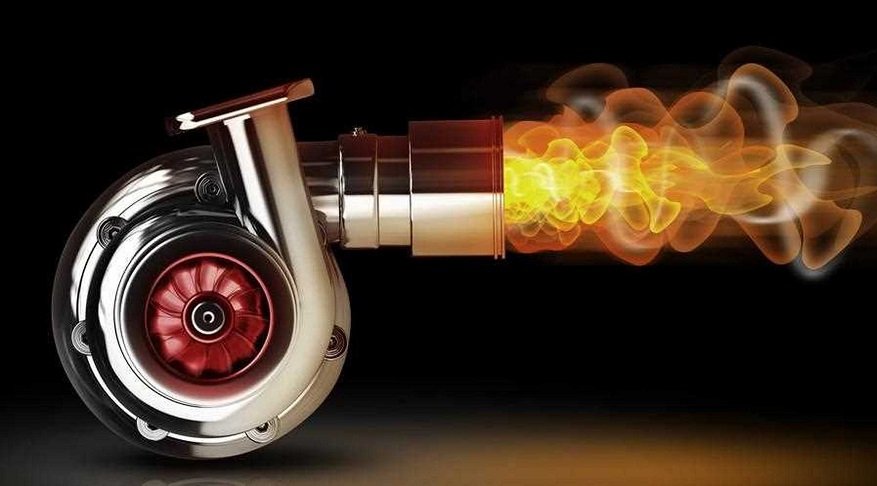Introduction
A turbocharger increases the power of a vehicle’s engine by forcing cool, compressed air into the combustion chamber, allowing the engine to burn fuel more efficiently. This leads to improved speed, enhanced performance, and often better fuel economy.
While turbochargers offer impressive benefits, a failing turbo can lead to serious problems, including loss of acceleration, strange engine noises, and smoke emissions. If ignored, a damaged turbocharger could cause catastrophic engine failure — potentially totaling your vehicle.
Understanding how a turbo works, recognizing the signs of trouble, and acting promptly can save you from costly repairs.
How a Turbo Works
A turbocharger, also called a “turbo” or “turbocharger assembly,” is typically mounted on or near the engine. Here’s how it functions:
Exhaust gases from the engine are used to spin a turbine inside the turbo.
The turbine drives a second turbine connected to the intake, which sucks in and compresses cool air.
Compressed air carries more oxygen. When this air is mixed with fuel inside the combustion chamber, it allows for more efficient burning.
The result is improved engine power, better fuel economy, and enhanced overall performance.
Initially embraced by car enthusiasts seeking maximum performance, turbochargers have now become standard equipment for many manufacturers aiming to increase fuel efficiency without sacrificing power. In fact, over one-third of new vehicles today are turbocharged, meaning a rising number of drivers must understand turbo maintenance and, when necessary, replacement.

Signs Your Turbocharger May Need Replacement
If your vehicle is equipped with a turbocharger, it’s critical to watch for these early warning signs of failure:
Loss of Power and Performance
One of the main advantages of a turbo is the boost it gives your engine. If the turbo is malfunctioning, you may notice a significant drop in engine responsiveness and acceleration.
Unusual Engine Noise
Normally, a turbocharger can make your engine sound smoother and quieter. However, a failing turbo often causes a distinct whining or siren-like sound, especially noticeable during acceleration.
Smoke from the Exhaust
When the turbo develops cracks or seal issues, oil can leak into the engine. This leak burns off during operation, producing blue or gray smoke, most commonly during acceleration.
Increased Oil Consumption
A failing turbo often leads to higher oil intake. If you notice that your vehicle is consuming more oil than usual without visible leaks, the turbocharger could be to blame.
Check Engine Light
Sometimes, a malfunctioning turbo triggers the vehicle’s Check Engine light. While this warning could relate to numerous issues, a diagnostic check may reveal the turbocharger as the source.
Why Turbocharger Failure Can’t Be Ignored
Ignoring the signs of a bad turbocharger is risky. A failing turbo can cause:
Severe engine damage if broken turbine blades or oil leaks go untreated.
Increased fuel consumption due to inefficient combustion.
Expensive repairs that far exceed the cost of early turbo replacement.
Addressing turbocharger issues early can save you thousands of dollars and extend your vehicle’s lifespan.
Turbocharger Replacement Costs
The cost to replace a turbocharger can vary widely based on the vehicle make and model, labor costs, and whether you choose an OEM or aftermarket turbo. On average:
Parts alone typically range from $500 to $2,500.
Labor costs can add $300 to $1,500, depending on complexity.
Thus, a full turbo replacement usually costs between $800 and $4,000. Luxury vehicles and sports cars tend to fall on the higher end of that range.
Choosing a skilled, reputable mechanic is critical when replacing a turbocharger. Improper installation can lead to repeat failures or additional engine problems.
Tips to Prolong Turbocharger Life
Although eventual wear is inevitable, you can extend the life of your turbocharger by following these practices:
Regular Oil Changes: Clean, high-quality oil is essential for lubricating the turbo.
Proper Warm-Up and Cool-Down: Allow the engine to reach operating temperature before heavy acceleration, and idle briefly after driving to cool the turbo.
Use Quality Parts: If replacing parts, opt for quality OEM or trusted aftermarket components.
Monitor for Symptoms: Early detection and maintenance can prevent catastrophic failures.
Conclusion
A properly functioning turbocharger enhances vehicle performance, boosts efficiency, and makes driving more enjoyable. However, recognizing the early signs of turbo failure and understanding the replacement process are crucial to avoiding costly damage.
If your car shows symptoms like reduced power, unusual noises, or smoke, don’t delay — consult a professional mechanic immediately. Addressing turbo issues promptly could save your engine and your wallet.
Investing in the maintenance and timely replacement of your turbocharger ensures your vehicle continues to deliver the performance and efficiency you expect.





